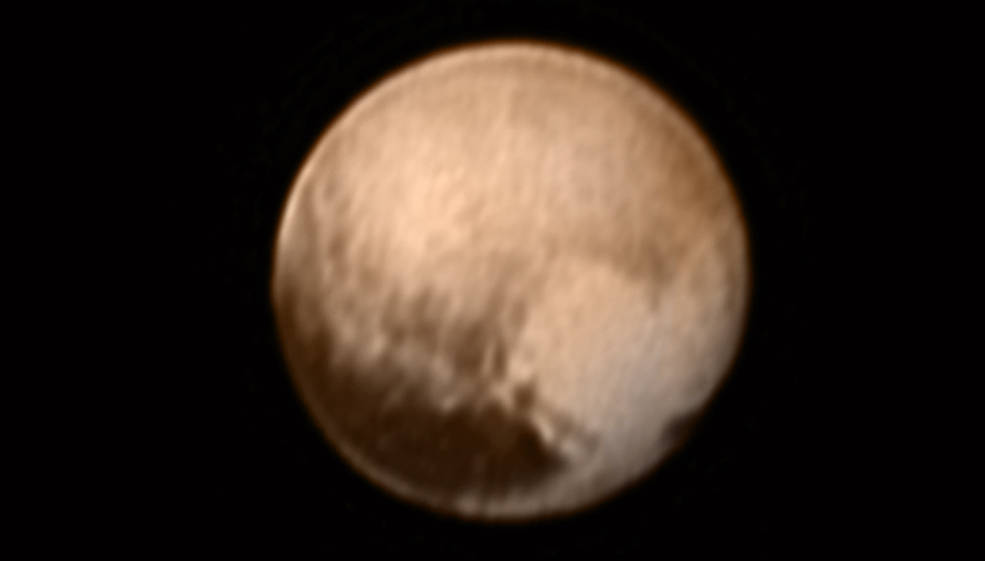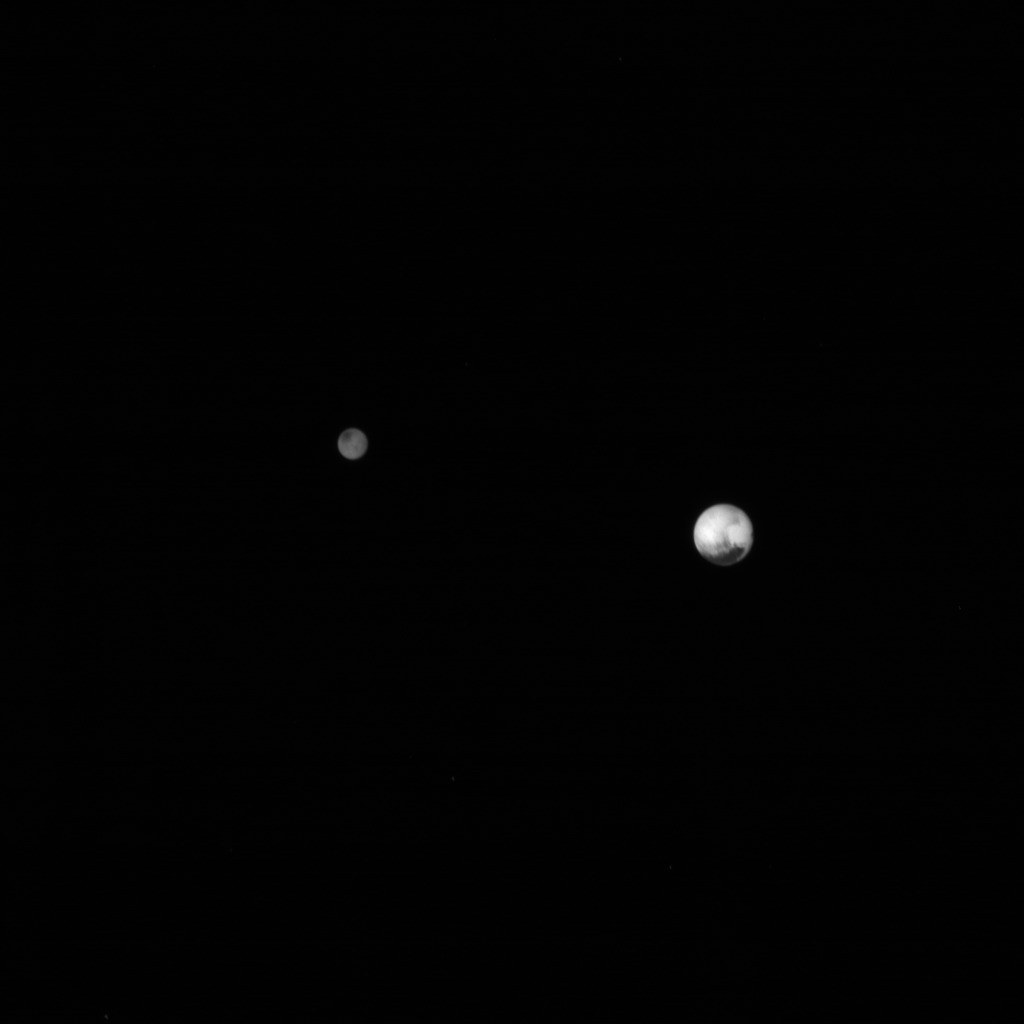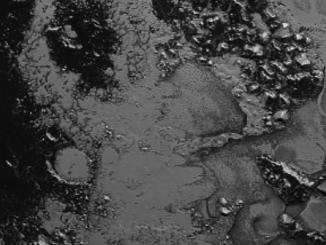
The New Horizons spacecraft speeding toward Pluto has returned a new image of the icy world lurking at the solar system’s outer frontier — the first photo beamed back to Earth since the probe suspended science operations Saturday.
The image from New Horizons’ long-range telescopic camera shows Pluto’s surface features sharpening into focus. A dark band stretching around Pluto’s equator, nicknamed “the whale,” and a large 1,200-mile (2,000-kilometer) diameter bright marking shaped like a heart are visible in the latest image.
The probe’s black-and-white Long Range Reconnaissance Imager, or LORRI, instrument captured the view just before 2300 GMT (7 p.m. EDT) on Tuesday. The images arrived on the ground on Wednesday after a four-and-a-half hour travel time from Pluto — 3 billion miles from Earth.
New Horizons was less than 5 million miles, or 8 million kilometers, from Pluto when it took the image, which shows Pluto’s equator near the bottom of the disk and north pole in the upper part of the view.
The spacecraft will see parts of the region observed in Tuesday’s image when it flies closest to Pluto on July 14. Pluto’s 6.4-day rotation period will bring the same part features back into view of New Horizons when it skims just 7,750 miles above the icy dwarf planet after a nine-year trip from Earth.
“The next time we see this part of Pluto at closest approach, a portion of this region will be imaged at about 500 times better resolution than we see today,” said Jeff Moore, New Horizons’ geology, geophysics and imaging team leader from NASA’s Ames Research Center. “It will be incredible!”

New Horizons resumed taking science data Tuesday, when it kicked off a pre-programmed command sequence governing the craft’s operations until July 16. The Pluto encounter command load allowed New Horizons to pick up with its mission after the probe went into safe mode Saturday, halting observations for three days.
The images will keep getting better until New Horizons goes silent July 13 to focus on science observations when its path nears Pluto, its largest moon Charon and four other small moons, according to Hal Weaver, New Horizons’ project scientist from the Johns Hopkins University Applied Physics Laboratory.
“It gets juicier and juicier,” Weaver said in a status briefing Wednesday. “The science team is just drooling over these pictures.
“Coming in from six days (out) to three days (out), you’re doubling the resolution with four times as many pixels across the objects,” Weaver said. “We’re going to start to get more compositional information on Pluto and Charon.”
Pluto’s closest approach to Pluto occurs at 1149:57 GMT (7:49:57 a.m. EDT) on July 14.
“We didn’t have any idea what to expect — hardly at all — and this is it,” Weaver said. “This is our once-in-a-lifetime opportunity to see it.”
Engineers expect to receive signals from New Horizons more than 13 hours later confirming the spacecraft — about the size of a baby grand piano — made it through the flyby. Then science data and imagery will begin to trickle to Earth, but scientists say Pluto’s faraway distance means it will take until late 2016 for all of the observations make it back.
Email the author.
Follow Stephen Clark on Twitter: @StephenClark1.



